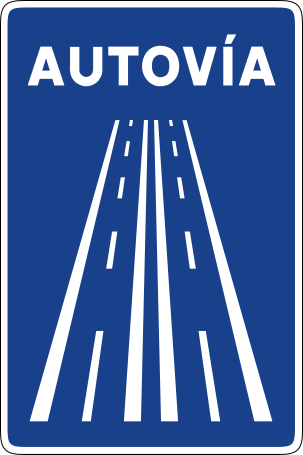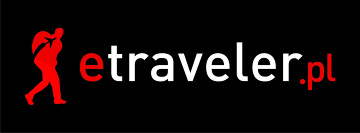Hello hitch-hikers, backpackers and travellers around the world! Welcome to our first photo challenge of 2013!
As we’ve already had our first hitch-hiking trip this year, coming from New Year celebrations in Bristol back to London, we thought that the first photo challenge in 2013 should correspond with our favourite way of travelling.
Have a look at our selection of hitch-hiking photos, which is not that impressive as when we hitch-hike we usually focus on getting the lift more than taking pictures of getting the lift :)
Hitch-hiking in Aragón, Spain, on our way from Aínsa to Torla and Parque Nacional de Ordesa y Monte Perdido. Empty roads and enticing mountains on the horizon…
Posing for a photo with our drivers in Debed Canyon, Armenia. If you want to start hitch-hiking, Armenia is the perfect choice for you: it’s easy, cheap, the people are really friendly and the landscapes are stunning!
Read the summary of our hitch-hiking trip in Armenia.

One of our many Turkish drivers. We didn’t share a common language so we had to make do with gestures and smiles.
Read the summary of our month-long hitch-hiking trip in Turkey, in which we covered 4233 km.

Portugal is not the easiest country for hitch-hiking. Sometimes it took us 7h to travel 30km, so we recommend it only if you have a lot of time to spare.
We very rarely make signs, as we believe some people might not stop if they are not going to exactly where we have indicated.
However, on our way from Porto to Coimbra, the waiting got to us and in our desperation we made this appealing sign.

I took this photo from a lorry window while hitch-hiking in Turkey in 2011.
With one of our drivers in Spain, during the last stretch of our “A dedo por la Península Ibérica” trip in 2012, in which we hitch-hiked across Spain and Portugal.
Jon’s hairy legs resting on the dashboard of one of our Turkish lorries. Read about the advantages and disadvantages of hitch-hiking in Turkey.
One of our drivers in Georgia. We were so lucky to be picked up by this guy twice in two completely different parts of the country! How lucky is that? :)

Here with other hitch-hikers from Poland we randomly met in the deep south of Armenia.

One of our relaxed Turkish drivers. He liked being comfortable while driving and, I swear, I saw him drop off to sleep a couple of times… Glad to still be alive!
Some lovely Spanish people who picked us up on our way to Santiago de Compostela, Spain.
Tony, an ex-heroin addict, now a truck driver, helping us cross the Spain-Portugal border. Read Tony’s story and watch the video of our border crossing experience.

These two Turkish families met while helping us on the road and then all together we were invited for dinner at one of their houses! There are no limits to Turkish hospitality!

Looking at these pictures makes me think that it’s a really big shame we have no photos of us hitch-hiking in Southeast Asia, Eastern Europe, Greece and the UK, but live and learn. Next time we’re on the side of a road praying for a lift, I’ll make sure we’ve got our camera handy too!
Now it’s your turn to show us how you hitch-hike!
Would you like to participate?
What are hitch-hiking photos? Photos of you waiting for a lift; your drivers; other hitch-hikers and roads you travelled on. You have one week to participate. The challenge closes on 31st March at 12.00 pm (CET). |
Make sure to read our other articles related to hitch-hiking:
- Why hitch-hike – get to know the reasons why we think hitch-hiking is superior to all the other ways of travelling.
. - Basic rules of the thumb – some handy advice to help you get started.
. - Crossing borders while hitch-hiking – crossing borders need not be a stressful experience. Here are some handy instructions to help you on your way.
. - When things go wrong – prevention is key and spotting trouble before it starts is the best way to ensure a safe and enjoyable experience..
-
How to travel on a budget (transportation: part 1 – hitchhiking) – as hitch-hiking is an unusual means of transport, it is important to get the first-hand perspectives, tips and accounts of people who’ve been doing it for years. Discover this handy list of hitch-hiking blogs, run by people who know the business well.
- Country guides – find the country in which you want to hitch-hike.
__________________________________________________________
YOU MAY ALSO LIKE
![Christmas decorations in cities around the world [photo challenge] – YOUR PICTURES](http://fbcdn-sphotos-d-a.akamaihd.net/hphotos-ak-prn1/15878_701656505358_378598811_n.jpg) |
![Interesting shop windows from around the world [photo challenge]](http://hitchhikershandbook.files.wordpress.com/2012/11/shop-windows-12.jpg?w=257&h=186&h=186) |
| Christmas decorations in cities around the world [photo challenge] – YOUR PICTURES | Interesting shop windows from around the world [photo challenge] |
Filed under: *Hitch-hiking experience*, *Photos* Tagged: challenge, hitch-hiking, hitchhiking, photography, travel, travel photography, travelling













 60–120 km/h (37–75 mph). The majority of them are toll roads. Hitch-hiking on them is illegal.
60–120 km/h (37–75 mph). The majority of them are toll roads. Hitch-hiking on them is illegal. 60–120 km/h (37–75 mph). They are never toll roads. Slow vehicles like bicycles and agricultural machinery are allowed as long as they don’t disrupt the traffic or cause any danger. Hitch-hiking on them is a grey area.
60–120 km/h (37–75 mph). They are never toll roads. Slow vehicles like bicycles and agricultural machinery are allowed as long as they don’t disrupt the traffic or cause any danger. Hitch-hiking on them is a grey area.















![Hitch-hiking in pictures [photo challenge] Hitch-hiking in pictures [photo challenge]](http://hitchhikershandbook.files.wordpress.com/2012/01/p1030257.jpg?w=257&h=480&h=186)


























![Interesting shop windows from around the world [photo challenge] – YOUR PICTURES Interesting shop windows from around the world [photo challenge] – YOUR PICTURES](http://fbcdn-sphotos-c-a.akamaihd.net/hphotos-ak-prn1/61451_496850667022381_660411836_n.jpg)

















![Braga, Portugal [travel guide] Braga, Portugal [travel guide]](http://hitchhikershandbook.files.wordpress.com/2012/09/braga-64-view-from-bom-jesus-do-monte.jpg?w=257&h=186)







![Braga, Portugal [travel guide] Braga, Portugal [travel guide]](http://hitchhikershandbook.files.wordpress.com/2012/09/braga-64-view-from-bom-jesus-do-monte.jpg?w=257&h=186&h=186)





































































